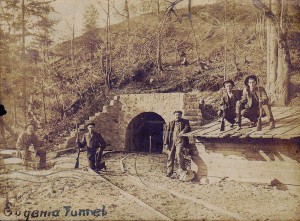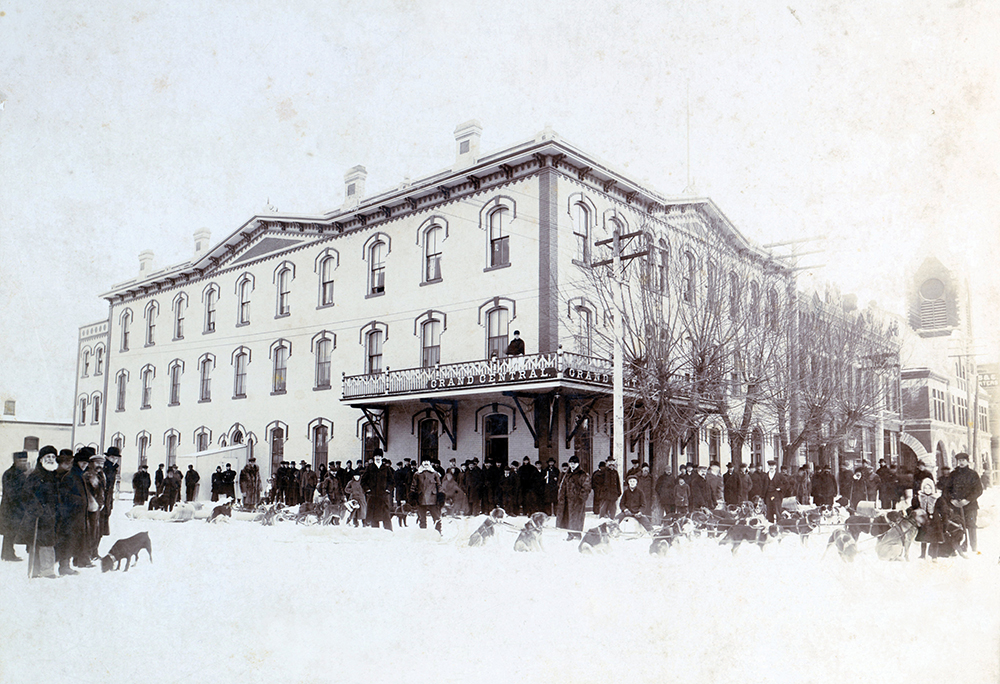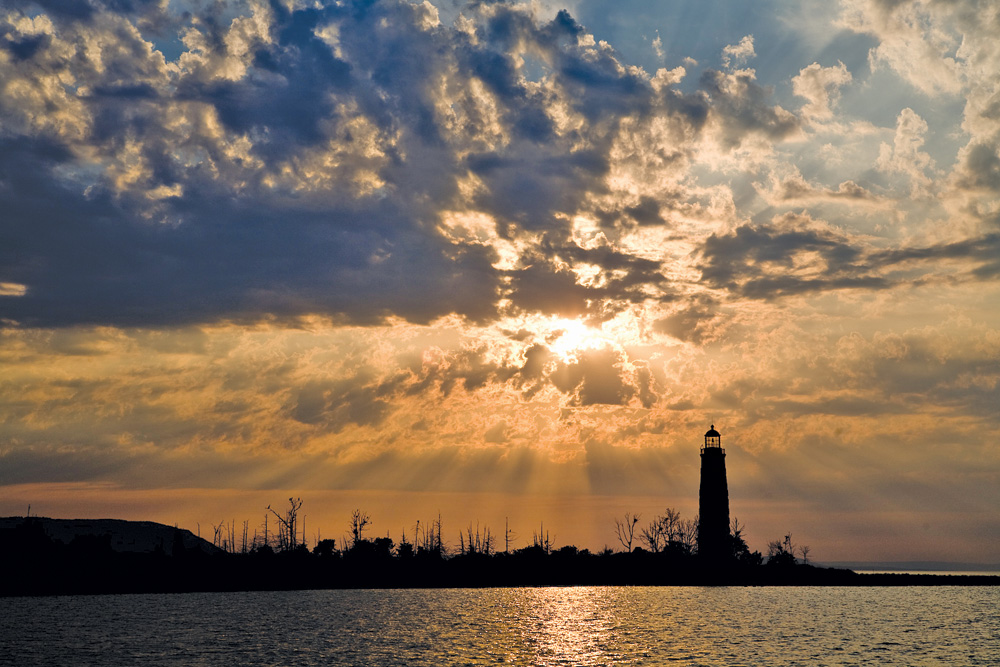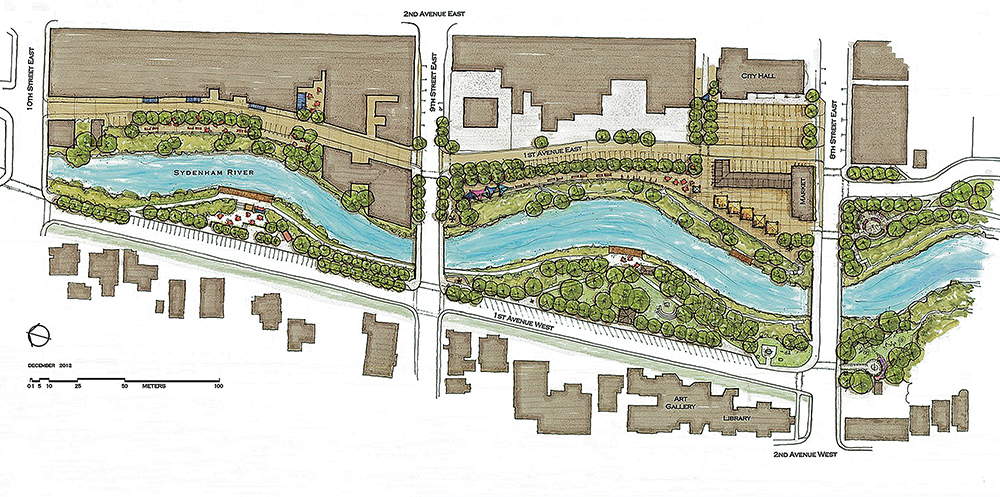In this postcard, circa 1907, hunters pose at the Eugenia Tunnel, a 264-metre long, 2.5-metre wide turbine tunnel through solid rock, which was completed that year to divert water from the Beaver River as part of a hydro-electric project. Unfortunately, the company behind the project went bankrupt and the tunnel was abandoned. The limestone façade still stands, however, in the middle of the Bruce Trail conservation lands near Eugenia Falls, with a popular hiking trail running under the arch.
At the time, the hydro project was just the latest failed attempt to put Eugenia on the economic map. The area’s first claim to fame arrived in 1852, when a farmer named Brownlee, an early settler near Flesherton, heard the whisper of the nearby falls while hunting one afternoon and followed the sound to the awe-inspiring sight of water flowing 30 metres over the Niagara Escarpment to the Beaver River below.
Brownlee shared the news of his discovery with his neighbours and returned with one of them a few days later. The men noticed the glint of gold on some of the rocks around the falls, swore each other to secrecy and quickly returned to mine their fortunes. However, word of the clandestine mining quickly spread, causing an explosion of activity as 200 men flocked to the area in a veritable gold rush. However, prospecting ceased within three weeks when reports came back that the “gold” the miners had been eagerly collecting was nothing more than worthless pyrite, or “fool’s gold.”
After the gold seekers had left, the water power potential of the falls drew William and Robert Purdy in 1859, who opened a store, ran a post office and built the first of several mills to line the river. Soon there was a hotel, general stores, churches, blacksmiths, coopers and carpenters in the burgeoning town near the falls. Ex-French military surveyors who were surveying the townsite, named the town and falls Eugenia, in honour of Empress Eugenie, the wife of Emperor Napoleon III. The town’s population grew to about 200, but after the railways bypassed Eugenia in favour of Flesherton, settlement dwindled and today only a small population remains.
In 1914, Ontario Hydro purchased 10,125 hectares of surrounding land, constructed a power plant, a dam and a water reservoir (now known as Lake Eugenia), and began generating power. The plant was upgraded in 1988 and now produces a continuous 6.3 MW of power. Today, The Eugenia Power Station, run by Ontario Power Generation, has the highest head of water of any hydroelectric generator in Ontario, and has provided a significant amount of electricity to the provincial grid for over a century.
Each July, Eugenia hosts Gold Rush Days, celebrating its rich history with festivities, entertainment and power station tours. This year’s event is scheduled for Saturday, July 2. ❧
For more historical photos of Southern Georgian Bay, check out Jason Booth’s Facebook page or the Collingwood Historical Photos Facebook group.















